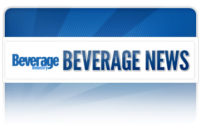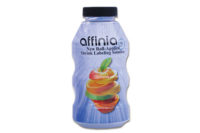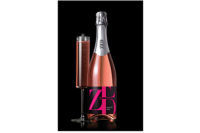New categories on the horizon
Analysts identify emerging beverage trends




Earlier this year, Vita Coco, which is distributed by Dr Pepper Snapple Group, made an investment in Coco Café, a producer of the same-named ready-to-drink coconut water mixed with organic and Fair Trade-certified espresso and milk.

Utmost Brands Inc.’s GUS – Grown Up Sodas are specifically formulated for adult palates, are less sweet than traditional CSDs and juice drinks, and feature distinctive, dry flavors, the company says.

Hangover Joe’s Products recommends that its Hangover Joe’s Recovery Shot be consumed the morning after drinking to aid in hangover recovery.

The Hain Celestial Group’s Celestial Seasonings Kombucha Energy Shots combine live, raw kombucha with B vitamins and energizing botanicals, such as ginseng and guarana.







In the summer of 2007, an English man posted a video of his one-year-old son biting the finger of his three-year-old son on YouTube. The video, known as “Charlie Bit My Finger – Again!,” went viral reaching 417 million views as of Feb. 9. At the time of publication, it was the most viewed video on YouTube that is not a professional music video, according to Wikipedia.
Like this video, the beverage industry has seen its fair share of products “go viral.” Going mainstream is no easy task, however, analysts have named the current emerging trends in the beverage industry, some of which might gain popularity quicker than others.
Healthy and exotic
Products that are non-traditional to the United States, such as coconut water and aloe vera drinks, are getting a lot more interest from the mainstream consumer, says Ty Law, U.S. research associate at Euromonitor International, Chicago. Non-traditional beverages can carry a health and wellness aspect, which consumers appreciate because they’re looking for healthier alternatives, he adds. If they try a product and enjoy it, they’re likely to spread the word, which can significantly increase a brand’s popularity.
The fact that some major beverage companies have invested in coconut water shows the subcategory is poised for growth, according to analysts. PepsiCo, Purchase, N.Y., has a majority stake in O.N.E. Coconut Water; The Coca-Cola Co., Atlanta, has a minority stake in Zico; and Vita Coco is distributed by Dr Pepper Snapple Group, Plano, Texas. These agreements are pushing the subcategory toward mainstream consumption, but the taste profile of coconut water might hold it back, Law says. Some Americans enjoy the taste of coconut water, but it might be too exotic for others.
Extending the category, earlier this year Vita Coco made an investment in Santa Monica, Calif.-based Coco Café, which produces a ready-to-drink coconut water mixed with organic and Fair Trade-certified espresso and milk.
Capitalizing on the viscosity of coconut water, Hermosa Beach, Calif.-based Zico Beverages introduced chocolate coconut water last year; it quickly became the company’s No. 2 best-seller, as reported in Beverage Industry’s December 2011 issue.
PepsiCo also added a new line of coconut waters to its portfolio. SoBe Lifewater with Coconut Water launched earlier this year, which follows the company’s Naked Juice subsidiary’s launch of Naked Coconut Water in 2010. In addition to plain coconut water varieties, both lines offer coconut waters infused with tropical fruit flavors. A few other beverage-makers are producing coconut waters mixed with fruit and antioxidants, including Weston, Fla.-based VPX, which makes Coco Fit; Kona, Hawaii-based KonaRed, which sells a coffee fruit-coconut water combination called KonaRed Coconut Water; and San Diego-based Acai Roots, which offers Organic Acai Juice + Coconut Water.
Combining two non-traditional flavors in the United States, SPI West Port Inc., San Francisco, makes a line of coconut water with aloe vera called Coco Exposed. The company also offers a line of Alō aloe vera drinks that contain aloe vera pulp. The drinks come in eight varieties and are available in mainstream and natural markets in the United States. Gourmetti Brands LLC, Aventura, Fla., also launched Chantea aloe vera drinks mixed with green tea last year — three of the four varieties include fruit flavors.
Although coconut waters have proven themselves to be popular with the larger beverage companies, aloe vera drinks haven’t gotten to that level yet.
“It’s still very niche, and I think that is something that will take a while for consumers to understand,” says Sarah Theodore, global drinks analyst for Mintel Food & Drink, Chicago. “We’re really used to thinking of aloe as something we put on our skin and not something that we taste. I think that’s something that consumers will actually have to taste it and understand that it’s something they can drink before it really takes off.”
Fizzy alternatives
Another trend is that many adults are trying to cut back on sugar intake and as they’ve aged, their palates have changed, leading them to seek a different, less sweet flavor profile. The interest in carbonated soft drinks (CSDs) formulated for adults has started to emerge in Europe and might be making its way to the United States, Mintel’s Theodore says.
“It’s something that I think would be a little bit more niche here in the United States because consumers here are much heavier consumers of traditional soft drinks. But I could see it catching on as a smaller segment or something in restaurants where there aren’t a lot of drink options to fill the gap between alcohol and mainstream soft drinks,” she says.
Utmost Brands Inc., New York City, recently added a Dry Root Beer flavor to its line of GUS – Grown Up Sodas. Also available in Dry Cola, Dry Cranberry Lime, Dry Meyer Lemon and Star Ruby Grapefruit flavors, the CSD line was specifically formulated for adult palates. The beverages are less sweet than traditional CSDs and juice drinks, and feature distinctive, dry flavors, the company says. Grown Up Sodas are all-natural, lightly sweetened with cane sugar and do not contain caffeine. A 12-ounce bottle contains between 90 and 98 calories.
Likewise, Denver-based Oogavé recently introduced a line of certified organic sodas sweetened with agave nectar. The brand is available in Cola, Watermelon Cream, Strawberry Rhubarb, Vanilla Cream, Mandarin Key Lime, Grapefruit, Ginger Ale and Root Beer flavors with less than 100 calories in each serving and no caffeine.
Hint, San Francisco, launched a line of flavored sparkling waters under the Hint Fizz brand name last May. After its first week on the shelves, the brand performed better in The Fresh Market stores than Hint water did in the company’s first year of business, Beverage Industry reported in its October 2011 issue. The brand recently won a 2012 Better Homes and Gardens Best New Product Award. The beverage line includes Blackberry, Watermelon, Strawberry-Kiwi and Peach flavors, and is natural, unsweetened, and calorie- and preservative-free.
Putting a twist on sparkling juices and sodas, Boundary Waters Brands LLC, Minneapolis, launched Joia All Natural Sodas infused with herbs and spices. Made from sparkling water, real fruit juices, natural flavors and pure cane sugar, Joia sodas are free of preservatives, caffeine and sodium. The beverages are available in four varieties: Lime, Hibiscus and Clove; Blackberry, Pomegranate and Ginger; Pineapple, Coconut and Nutmeg; and Grapefruit, Chamomile and Cardamom.
Custom concoctions
When Northfield, Ill.-based Kraft Foods launched Mio liquid water enhancers last year, it capitalized on the industry’s customization trend. With the recent launch of Mio Energy, liquid concentrates are on the cusp of emerging as a trend, Mintel’s Theodore says.
“We know that consumers love this idea of customization, so the concept of a product that lets them determine the flavor intensity or lets them mix flavors with any kind of drink base that they want to mix it with is something that should really be appealing. But it is something that’s so new and that U.S. consumers are really not familiar with yet,” she explains. “I think it’s going to take some time for that to catch on and it’ll probably require a few competitors to establish that as a viable category here.”
In the nightclub and high-end restaurants arena, Pacific Shore Holdings Inc., Los Angeles, released its own liquid concentrate. Energy-X’s The Juice energy mix is a 500-ml. bottle that features a single serving, one-quarter-ounce spout attached to the top. One serving delivers 70 mg. of caffeine and nearly a full daily dose of vitamins B12, B6 and B3. The Juice energy mix is sugar-free, flavorless and odorless with zero calories and carbohydrates, the company says. Currently, it’s only available at select Hollywood backstage celebrity and VIP events, and will be released to the public later this year, it adds.
Recovery drinks
The sports drink category has seen an increase in post-workout recovery beverages. Looking at recovery beverages from a nightlife perspective, hangover shots might fit into that trend, Mintel’s Theodore says.
Last year, Dolce Bevuto LLC, West Hollywood, Calif., launched Noho, a dietary supplement formulated to hydrate the human body with the nutrients it loses while drinking alcohol, thus preventing a hangover, the company says. Consumers are instructed to drink the 2-ounce shot before their first alcohol beverage to help prevent a hangover.
On the other hand, Party Armor, Bay City, Mich., suggests consumers should drink its same-named shot after drinking alcohol and before going to sleep. A 2-ounce Party Armor shot contains 17 ingredients — such as prickly pear extract, which contains antioxidants that support the liver with detoxification abilities and as an anti-inflammatory agent that aids in the relief of nausea — to help the consumer’s body recover while sleeping, the company says.
Cincinnati-based Hangover Joe’s Products, on the other hand, recommends that its Hangover Joe’s Recovery Shot be consumed the morning after drinking. The formulation contains vitamins B6, B12 and niacin, as well as the kudzu root and flower because of their cooling properties that address the heat component of the alcohol, the company says. The company partnered with Warner Bros. to feature images of characters from the movie “The Hangover” on Hangover Joe’s Recovery Shot bottles.
Making a comeback
Kombucha beverages were on the upswing a few years ago, until many retailers pulled the drinks due to alcohol content that emerged as the fermented tea products were on the shelves, explains Euromonitor’s Law. According to the U.S. Food & Drug Administration, products containing alcohol levels of 0.5 percent or more must carry warning labels.
Now that beverage-makers have regulated their products’ alcohol content, kombucha might be making a comeback. According to Law, kombucha fits the health-and-wellness types of drinks that consumers are demanding. And because it was so popular before, there’s a good chance that it could become popular again.
Between January 2011 and January 2012, beverage-makers launched 25 new kombucha drinks in the United States, according to Mintel’s Global New Products Database. One such product was Boulder, Colo.-based The Hain Celestial Group’s Celestial Seasonings Kombucha Energy Shots. The all-natural 2-ounce shots combine live, raw kombucha with B vitamins and energizing botanicals, such as ginseng and guarana.
Similar to the ups and downs of kombucha beverages, relaxation drinks have been fighting for market share through the years. Relaxation beverages started to hit shelves just as the recession came about, which was a challenging time to establish a new product concept, says Mintel’s Theodore. She also highlights that the majority of drink products that claim to relax, calm or help relieve stress are teas, but that relaxation is making its way into additional categories.
“Other formats like relaxation soft drinks and flavored waters are much newer — they really only entered the scene a few years ago,” Theodore says. “Right now they are at the point where they need to gain more visibility in the marketplace, and make sure consumers know what they are and what they do.”
Despite the difficulties, IBISWorld, Santa Monica, Calif., forecasts annualized growth for relaxation drink production at nearly 25 percent from 2011 to 2016, reaching $223.5 million in 2016. The research firm estimated revenue growth at a 68.7 percent annualized rate for the five years leading up to 2011, with a 49.5 percent increase from 2010 to 2011 alone, totaling $73.7 million in 2011.
Based on National Health Institute findings, IBISWorld estimates that there are more than 53 million Americans who have trouble sleeping — and that doesn’t include people who have trouble focusing or dealing with stress, which are addressed by some formulations. As a result, IBISWorld expects the number of businesses producing relaxation beverages to increase 10.2 percent annually, resulting in 117 enterprises by 2016.
In 2011, about 40 new relaxation drinks were launched, it says. The market research firm reports the prospect of partnerships with major beverage companies combined with greater demand from consumers and retailers will propel the subcategory.
Taking advantage of stressed-out consumers, C3 for Stress is an all-natural, effervescent powdered dietary supplement that can be dissolved in water or juice to help the consumer feel calm, the company says. Introduced in late November, it’s available in single-serve packets for portability and convenience, it adds.
Capturing about 13.8 percent of the relaxation beverage market, according to IBISWorld, Dream Water, launched by Dream Products LLC in January 2010, is formulated to relax consumers and help them fall asleep. As of November 2011, it is available in more than 20,000 locations, including CVS, Walgreens, Walmart, Albertsons and Hudson News.
With 13.7 percent market share, Innovative Beverage Group, Houston, produces Drank, a lightly carbonated grape-flavored beverage formulated with melatonin, rose hips and valerian root. In 2009, the company doubled its revenue, reaching about $5 million. IBISWorld projected the company’s revenue to grow to $10.1 million by 2011.
Claiming a 7.1 percent share of the market is The Relaxing Co. Inc., Denver, which makes Mary Jane’s Relaxing Soda and Relaxing Tea. Both feature the ingredient kava extract, which promotes relaxation and counteracts stress, insomnia and anxiety, the company says. Earning about $200,000 in sales from Mary Jane’s Relaxing Soda during its first year, the company reached $3.8 million in 2010 as its products became more widely available, IBISWorld reports. The firm forecasted company revenue would increase 38 percent to $5.2 million in 2011.
The market research firm also forecasted revenue for ViB, a relaxation drink by ViB Holdings LLC, Austin, Texas, to double in 2011, reaching $2.6 million in sales. BI
| Juiced up |
|
Although juice smoothies have been popular for years, they might be attracting more attention in the near future at retail and foodservice locations, analysts say. In November 2011, Seattle-based Starbucks Coffee Co. announced its acquisition of Evolution Fresh Inc., San Bernardino, Calif. To showcase Starbucks’ growing portfolio and as consumers become increasingly aware of Evolution Fresh, the company plans to introduce a new health and wellness retail concept in early to mid 2012 that will further redefine the super-premium juice category and experience for consumers unlike any prior existing juice retailer, the company says. “There’s this idea that Starbucks could take the success that they’ve had in coffee shops and replicate that in the juice segment, and I think that’s going to make this a really interesting category to watch,” says Mintel’s Theodore. “The fact that they’ll have ready-to-drink products and retail stores I think will inspire a lot of innovation from other companies in this area, too. There’s going to be a lot of attention on juice and on smoothies, so that always seems to inspire a lot of other companies to start innovating.” A May 2011 Packaged Facts report titled “Functional and Natural Ready-to-Drink Beverages in the U.S.” predicts that the overall yogurt drink and fruit juice smoothie category will grow at a compound annual growth rate of 4 percent from 2010 to 2015, reaching $1.1 billion by 2015. BI |
Looking for a reprint of this article?
From high-res PDFs to custom plaques, order your copy today!













